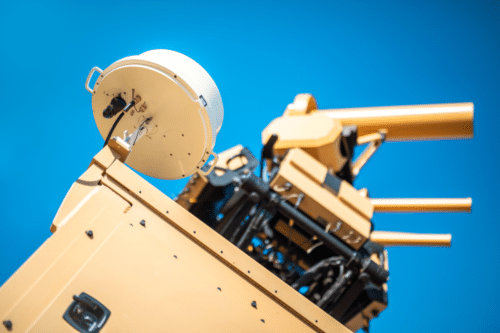D-Fend Solutions and Liteye Systems have developed SHIELD-Cyber, an integrated system for a multi-domain defense system.

The concept of drones may sound a fresh concept and may have a large scope in future, but it has a very long past as well. The first introductions of the drone concept dates back to the mid 1910s. The technology was meant to meet military applications and has emerged into domestic uses too. Though it does not limit itself and has developed into more and more sophisticated designs. The drones to this date are used in the defense applications.
D-Fend Solutions and Liteye Systems have developed anti-drone technologies to avoid drone threats. EnforceAir by D-Fend Solutions and SHIELD by Liteye Systems provide counter-drone cyber, radio frequency (RF)-based takeover technology. The companies have come together to develop an integrated and enhanced solution for dealing with complex drone threats from both RF control and RF silent waypoint navigation.
The combined capability of SHIELD-Cyber will provide an in-depth defense mechanism with a coordinated response according to scenario and security considerations specific to each protected asset or area of concern. The SHIELD-Cyber system uses EnforceAir’s radio frequency detection in conjunction with radar detection, track, and ID to positively identify the targeted drones. EnforceAir provides information about the drone type, protocol, and frequency to classify the threat. This information will then assist SHIELD operators to determine which frequencies to jam, for mitigation purposes. The integrated solution provides a stronger countermeasure against the drone threat while allowing for a safer outcome for troops, personnel, and infrastructure.
This technology integration provides a series of benefits, including:
- Combat-proven components, platform-agnostic, reduced labor requirements, and increased detection and mitigation range.
- Mobile and on-the-move capability to passively monitor and defeat RF-controlled drones, while additionally detecting and defeating “silent flight,” or ground and other threats.
- Controlled retraction of full SHIELD detection capability by employing EnforceAir detection if radar use is not possible due to non-clear line-of-sight or strong ground reflections, or when the mission requires only passive/silent operations.
- Additional mitigation capabilities for a more controlled, less disruptive defense.
- Easy and accurate identification of drone operator location and elimination of rogue drones with a real-time location accuracy of airborne threats, takeoff locations, and operator’s hand controller location.










